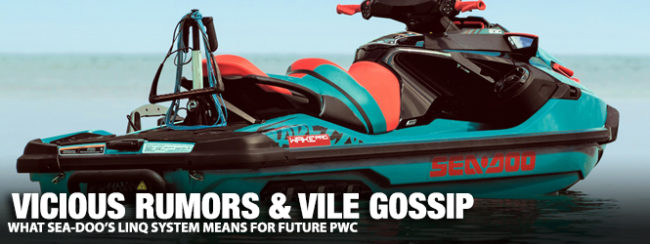
When Sea-Doo unveiled its entirely redesigned ST³ platform (RXT/GTX/Wake 230) in early October of last year, one of the brand’s biggest additions to its lineup of runabouts was the incorporation of the LinQ accessory system. Borrowed heavily from sibling product lines Ski-Doo and Can-Am within the BRP family, Sea-Doo’s LinQ feature is surprisingly easy to operate, uniquely versatile and a gateway to very robust catalog of aftermarket accessories. For those unfamiliar, LinQ begins with two pop-up fastener mounts that can snap-flat into the deck. The two mounts accept (currently) three options from Sea-Doo’s own accessory line: a 4-gallon fuel caddy, a semi-rigid collapsible storage bag, 4.2-gallon weather-proof cooler. Unique to Sea-Doo’s LinQ-equipped watercraft is also the screw-top port for the retractable ski pylon, effectively making every ST³-based runabout a Wake model.
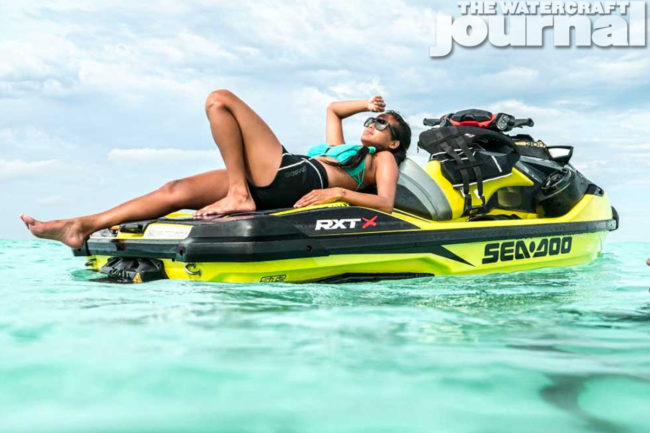
As Sea-Doo’s LinQ system effectively takes a healthy bite out of the accessory aftermarket’s offerings of deck racks designed for coolers and gas cans, it does offer a fresh avenue for both BRP and savvy aftermarket companies to begin developing items specifically tailored to fit the various needs and interests of new Sea-Doo buyers. As of this writing, current sales of the new ST³-based Sea-Doos have been strong, with many being attracted to the stealth-bomber design, centralized storage compartment, and newfound offshore/rough water prowess, among many other features. Moreover, as observed by almost all of Sea-Doo’s present marketing material, BRP is pushing the new vehicle’s focus towards adventure riding, exploration and general touring, or more specifically, equipping enthusiasts to spend all day on their watercraft.
Already, we’ve learned of companies finding ways to adapt their large-capacity deck racks to the LinQ system, permitting buyers to continue using larger fuel cans and coolers as they ride. (Seeing that the LinQ mounts are molded plastic, we suspect other provisions will be developed to supplement the mounts.) Others are exploring how to mount collapsible deck chairs for use while lounging (not while the engine is running). One of the more promising prospects is an extensive effort to develop an adjustable-height swivel stool for fishing, that mounts in the ski pylon’s port. This, combined with the cooler that has been plumbed to the jet pump, would equip a fisherman with a comfortable, stable platform to fish from with a live bait tank and all with almost zero modification to the Sea-Doo itself, something would be almost impossible just a few short years ago.

For Sea-Doo’s Parts & Accessories division, developing new offerings for its LinQ system is currently the task at hand. Although the “Chill Shade” wasn’t a big success with many Spark owners, a similar canopy combined with a LinQ-attached chair (rather than lying on the bare plastic panel) may see some success, particularly as more and more owners use their Sea-Doos to relax. A LinQ-attached, battery-powered speaker box that communicated with the BRP Premium Audio sound system’s Bluetooth connectivity would make any such-equipped Sea-Doo a rolling party boat. Finally, as both the ski pylon and storage bag can occupy the ST³’s deck simultaneously, a raft package (including a rope, raft, and 12-volt inflator) wherein a one-rider inflatable tube can be removed, inflated, towed, deflated and stored without occupying the Sea-Doo’s central storage could be the brand’s best family-oriented offering. While we’re not confirming any of these accessories here, we have heard talk of them.
Depending upon the public’s reception to the LinQ system and what accessories prove to be most successful, we might see its integration into the upcoming redesign of Sea-Doo’s Recreation (ie. GTI) platform in the next two years – as well as with the Spark to a lesser extent. While it is highly doubtful that we’ll see parallels to LinQ with Yamaha or Kawasaki, we do know that OEMs value officially-branded accessories a great deal and could ramp up their catalogs respectively. Certainly the addition of sound systems has caused a stir, and the addition of phone charging ports are soon to follow. People want more from their personal watercraft – as far as in-vehicle features, ability to do more with it, and the means to do so – and the OEMs are rising to meet the demand. Whether you’re riding for sport, exploring the shoreline of a remote location or simply looking to blow off some steam on a nearby lake, manufacturers want to equip you with everything you could possibly need to do it.







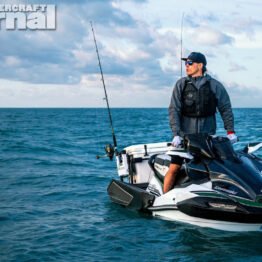

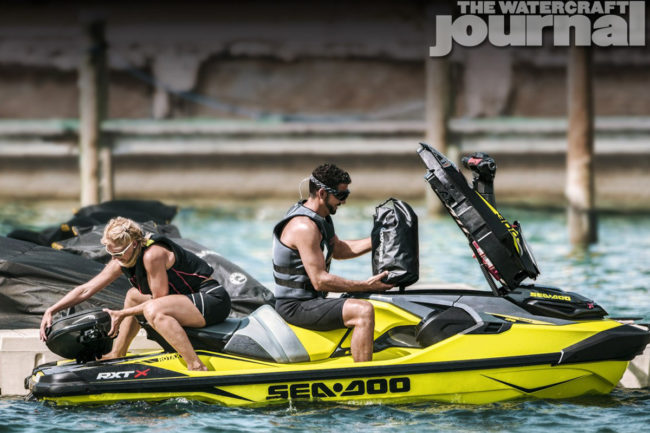


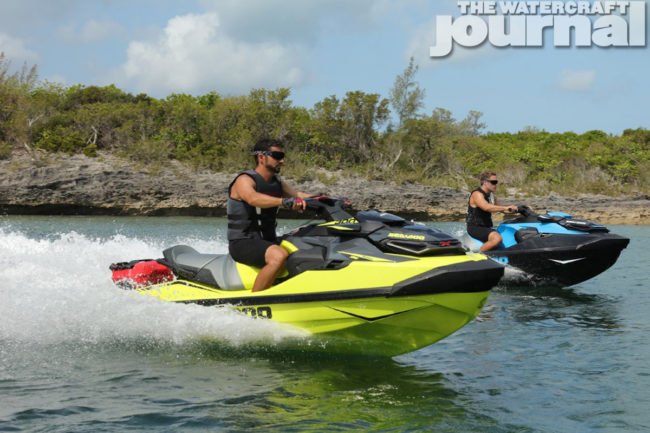

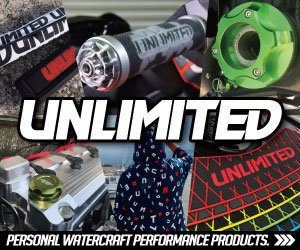





With Kawasaki, they need to “ramp up” their Jet Ski lineup before they “ramp up” any accessories for their Jet Skis. Some modern technology would be nice (i.e. braking system, fly by wire on the LX, STX, SXR, lighter weight models, etc)
I love the braking system on my SeaDoo RXT-X-300. Great ski.